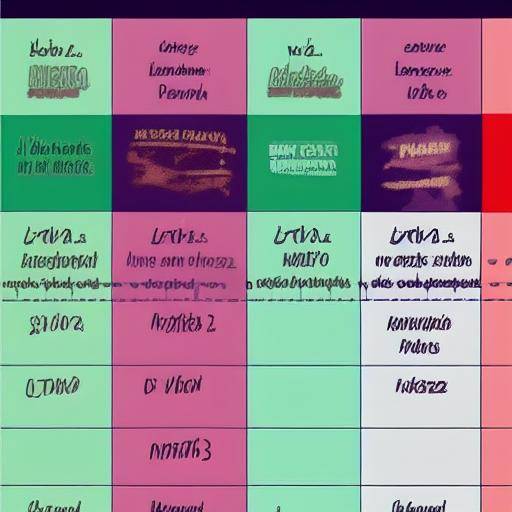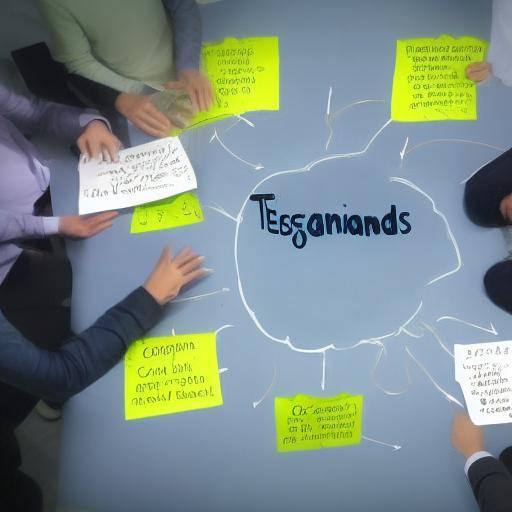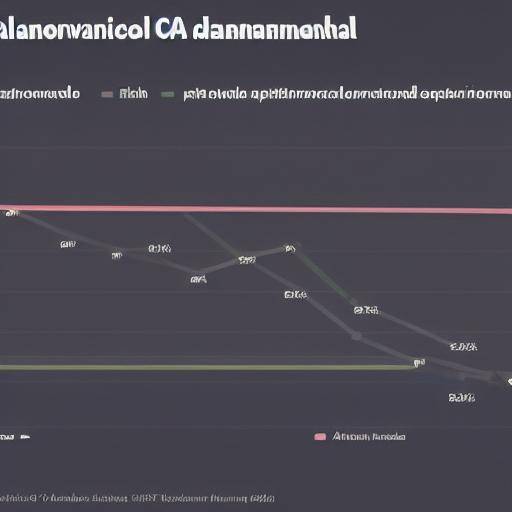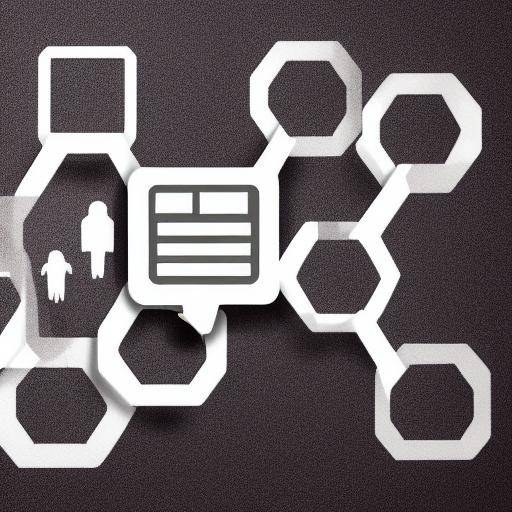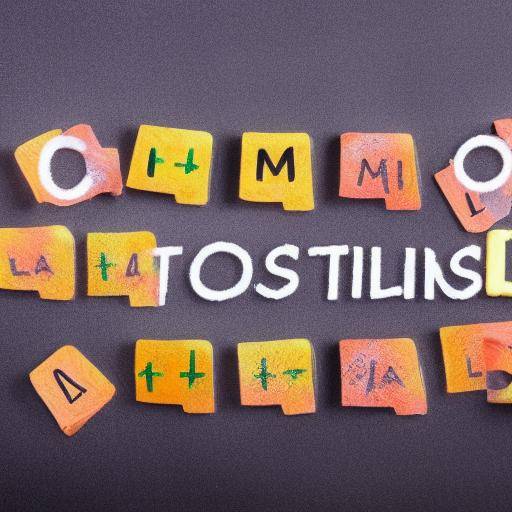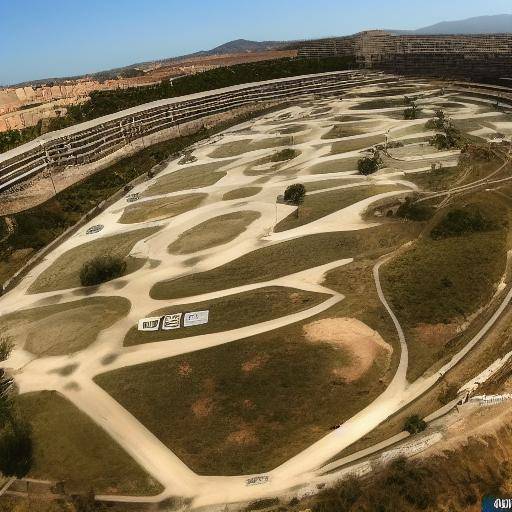
In the current business environment, the effectiveness of the reward system plays a crucial role in employee motivation and performance. However, the key to maximizing the impact of this system lies in defining and achieving achievable goals. In this article, we will explore in detail the influence of the achievable goals on the rewards system, their relationship with strategic planning and best practices for implementation.
Introduction
The administration of attainable goals in the working environment is a determining factor in ensuring an effective reward system. The ability to set realistic, attainable and aligned objectives with organizational vision not only drives individual performance, but also strengthens corporate cohesion and culture. In this article, we will unravel the importance of the attainable goals in the context of the reward system, exploring their impact, benefits, challenges, planning strategies and their influence on organizational effectiveness.
History and Background
The relationship between attainable goals and reward systems has deep roots in the theory of administration and organizational development. From the early theories of the scientific administration of Frederick Taylor to contemporary approaches of goal management, the concept of establishing challenging but attainable goals has evolved significantly over time.
Origins and Evolution
The concept of attainable goals within reward systems finds its roots in the search for optimisation of work performance in the early twentieth century. The pioneers of the administration, such as Taylor and Henri Fayol, laid the foundation for the efficient management of human resources, although their initial approaches lacked the motivational component that incorporates the establishment of attainable goals.
Subsequently, Peter Drucker's goal management theory in the 1950s revolutionized how companies focused productivity and performance. This approach enabled organizations to set specific and measurable targets, providing employees with the clarity and approach needed to achieve those goals.
The continuous evolution of these theories has led to a deeper understanding of how achievable goals can optimize the effectiveness of the reward system, aligning individual interests with organizational goals.
Significant issues
Within the historical evolution of the attainable goals, various milestones have helped to consolidate their importance in the business sphere. Among them, the popularization of goal management in the 1960s, the introduction of goal-based reward systems in the 1970s and, more recently, the integration of tracking and analysis technologies for the definition and monitoring of goals within organizations.
Analysis in Deep
The adoption of achievable goals as a central component of the reward system entails a number of benefits and challenges that it is essential to understand for effective implementation.
Benefits and Benefits
The implementation of achievable goals in the reward system entails a number of tangible and intangible benefits for organizations. Key benefits include:
- Sustained motivation: The establishment of achievable goals provides employees with a sense of achievement and progression, resulting in sustained motivation and greater commitment to organizational objectives.
- Guidance and Approach: Achievable goals provide clear guidance on individual priorities and objectives, allowing employees to direct their efforts towards achieving concrete results.
- Professional development: By fineing progress and achievements, employees can identify areas of development and growth, which promotes continuous professional growth.
- Strengthening of Performance: The establishment of achievable goals fosters a proactive approach to achieving results, which strengthens individual and collective performance in the organization.
- Organizational cohesion: By aligning individual goals with organizational objectives, cohesion and teamwork are promoted, creating a collaborative and achieving environment.
Challenges and Considerations
Despite the obvious benefits, the implementation of achievable goals within the reward system poses significant challenges that need to be addressed to maximize their effectiveness.
- Risk of Overexigence: Setting very demanding goals can lead to increased stress and pressure on employees, which potentially impacts negatively on their well-being and performance.
- Fixing Unreachable Goals: Bad planning or lack of realism in setting goals can result in unreachable goals, which demotivates employees and undermines trust in the reward system.
- Achievement of Goals: In environments where individual goals are not aligned with the overall strategy of the organization, conflicts of interest can be generated, affecting cohesion and collective performance.
- Resistance to Change: The implementation of achievable goals can face resistance by employees accustomed to more flexible work systems, requires effective communication and a gradual adaptation process.
Current Trends and Innovation Practices
In the quest to optimize the effectiveness of the reward system through attainable goals, various current trends and innovative practices have emerged as a response to the contemporary challenges of the working environment.
- Focus on Integral Welfare: The integration of goals related to the physical, mental and emotional well-being of employees within the reward system reflects a trend towards a more holistic approach to performance and labor motivation.
- Objective customization: The individualization of goals according to the strengths, interests and aspirations of the employees has gained relevance, allowing a more personalized and effective approach to managing attainable goals.
- Incorporation of Monitoring and Analysis Technologies: Advanced technology platforms and tools facilitate the monitoring and dynamic adjustment of goals, providing employees and managers the ability to adapt quickly to changes and challenges.
- Focus on Sustainable Results: The adoption of goals that transcend the short term and contribute to long-term sustainable results represents an emerging trend, aligned with principles of social responsibility and sustainable development.
Comprehensive review
In addition to understanding the current benefits, challenges and trends related to the achievable goals in the reward system, it is essential to analyse practical applications, case studies and best practices for implementation.
Practices and Success Cases
The impact of achievable goals on the effectiveness of the reward system is evidenced through multiple practical applications in various business areas. Some examples include:
- Technological Industry: Leading companies in the technological sector have implemented reward systems based on achievable goals, demonstrating a significant increase in innovation and productivity.
- Financial Services: Financial entities have capitalized on the potential of realistic goals to promote professional growth and talent retention, generating tangible results in terms of operational efficiency and quality of service.
- Manufacturing: In production environments, the implementation of achievable goals has demonstrated positive impacts on the reduction of cycle times, improvement of quality and optimization of processes.
Best Practices and Recommendations
The effectiveness of the attainable goals in the reward system is enhanced by the adoption of best practices and strategic approaches that maximize their impact. Some key recommendations include:
- Transparent Communication: Ensuring clear and transparent communication on evaluation goals and criteria promotes employee understanding and acceptance.
- Flexibility and adaptability: Including flexible mechanisms to adjust goals according to changes in the working environment or organizational goals provides agility and relevance to goal planning.
- Recognition and Celebration: To recognize and celebrate the achievement of goals, as well as the effort and progress towards them, strengthens the motivation and commitment of employees.
Comparative analysis
A comparison between the attainable goals, the rewards system and strategic planning allows us to identify the interrelations and synergies that enhance the effectiveness and coherence in business management.
Similarities and Complementarities
Achievable targets, rewards and strategic planning share key elements that enable alignment and complementarity, such as:
- Results orientation: The three concepts highlight the importance of establishing clear and achievable goals that guide action and generate value for the organization.
- Motivation and Commitment: Achievable goals are a motivation and commitment engine, relevant aspects of both the reward system and strategic planning.
- Organizational alignment: The cohesion between individual goals, rewards and strategic objectives contributes to the overall alignment and effectiveness of the organization.
Differences and Focus Areas
Despite similarities, each of these concepts presents significant differences in its approach and application:
- Alcanzable targets: They focus on establishing and achieving clear and realistic goals at the individual or team level, driving motivation and performance.
- Reward System: Consider the allocation of incentives, recognitions or compensations based on the achievement of results in order to motivate and encourage desirable behaviours.
- Strategic planning: Address the definition of long-term organizational goals, the allocation of resources and the determination of direction and actions to follow in order to achieve those objectives.
This distinction between approaches allows us to understand how these elements interact and strengthen each other in the business sphere.
Practical Tips and Accessible Recommendations
Effective implementation of achievable goals in the reward system requires the adoption of practical advice and actionable recommendations that optimize their impact.
Key Tips
Some practical tips for managing attainable goals in the reward system include:
- Defining Clear and Measurable Goals: Establishing specific and quantifiable goals gives employees the necessary clarity to focus their efforts efficiently.
- Offer Constant Feedback: Providing timely feedback on progress towards goals and individual performance strengthens understanding and commitment.
- Promoting collaboration: Including goals that promote collaboration and teamwork reaffirms the importance of cooperation in achieving results.
- Flexibility and Just Adjudication: Providing flexibility to adjust goals according to changing circumstances and ensuring fair award of results-based rewards avoids inequity perception.
Practical Actions
To ensure effective implementation of achievable targets in the reward system, the following practical actions can be carried out:
- Establish Individual Planning Sessions: Conduct individual planning sessions to define and align attainable goals with the aspirations and capabilities of each employee.
- Implement Tracking Technologies: Incorporate digital tools that allow the dynamic monitoring and management of goals, facilitating agile adaptation to contextual changes.
- Offering Meta Establishment Training: Train leaders and employees in the proper formulation of achievable goals and their effective integration into the reward system.
- Reevaluate and Adjust regularly: Schedule periodic reviews to reevaluate and adjust targets based on progress and evolution of the business environment.
Industry Perspectives and Expert Reviews
The perspectives of industry and the opinions of experts in organizational psychology, human resources management and leadership provide an integral vision on the effectiveness of the attainable goals in the rewards system.
Emerging predictions and trends
Current and future trends related to achievable goals and reward systems predict the continuation of innovative and adaptive approaches that align with the evolution of the working environment.
- Higher Ethphasis in Non-Modern Recognition: The trend towards non-monetary recognition, focused on gratitude, appreciation and opportunities for growth, becomes relevant as a complement to tangible rewards.
- Variable towards Sustainable Development Goals: The integration of goals related to the UN Sustainable Development Goals reflects the growing importance of corporate social responsibility in defining organizational goals.
- Approach to Diversity and InclusionThe inclusion of goals related to diversity, equity and inclusion in reward systems reflects the growing commitment of companies to creating diverse and fair working environments.
Voices of Experts
Dr. Mariana González, Psychologist
"The establishment of attainable goals in the working environment not only strengthens the motivation and commitment of employees, but also has a positive impact on the psychological health and general well-being of people."
Santiago López, Professional in Talent Management
"The key to effective implementation of achievable goals lies in strategic alignment and transparent collaboration between management and teams, promoting a sense of belonging and shared purpose."
Dr. Isabel Martínez, Expert in Leadership and Organizational Development
"The integration of achievable goals into the reward system not only generates short-term impacts on performance, but also fosters continuous growth and a culture of learning in the organization."
Case Studies and Practical Applications
Case studies and concrete examples of practical applications illustrate how the effective implementation of achievable goals in the reward system generates tangible results.
Case Study: XYZ Company
Company XYZ, a leader in the financial services sector, implemented a reward system based on achievable targets, achieving a 30% increase in productivity and a 15% reduction in staff rotation in a period of 18 months.
Applications in Different Sectors
- Technology Sector: ABC, a technology multinational company, integrated achievable goals focused on innovation and product quality, achieving a 25% increase in the registered patent rate and greater customer satisfaction.
- Manufacturer Industry: The DEF company implemented achievable goals aimed at operational efficiency and product quality, resulting in a 20% decrease in cycle times and a 35% increase in customer satisfaction.
Future Trends and Predictions
Future trends related to achievable goals in the rewards system point to new innovative approaches and practices that continue to transform the working environment.
Key predictions
- Increase in customization: The customization of goals according to the individual preferences and needs of employees will gain relevance, promoting a greater sense of commitment and valuation.
- Integration of Welfare Metrics: The inclusion of metrics related to well-being and job satisfaction in the design of goals and rewards reflects increasing attention to non-pure quantitative aspects.
- Flexibility of Rewards System: Flexibility in the allocation of rewards, allowing employees to influence the type and time of rewards, are profiling as an emerging trend that promotes autonomy and motivation.
Conclusions
The effective integration of attainable goals into the reward system is a powerful engine of motivation, performance and commitment in the working environment. By aligning individual objectives with organizational vision, it fosters a climate of proactivity, collaboration and focus on results. Understanding the benefits, challenges, innovative practices and future trends related to the attainable goals in the reward system enables organizations to enhance their effectiveness and sustainability.
Frequently asked questions
What is the impact of establishing achievable goals in job performance?
Establishing achievable goals drives work performance by providing clear guidance and sustained motivation to achieve concrete results. It also promotes professional development and strengthens organizational cohesion.
What are the main challenges in setting attainable goals in the reward system?
Some challenges include the risk of over-requirement, unreachable goal setting, collision of individual goals and resistance to change. Addressing these challenges proactively is crucial to maximizing the effectiveness of the attainable goals.
How can achievable goal-setting practices be improved in the reward system?
Improve transparent communication, offer flexibility and adaptability, promote recognition and celebration, as well as reevaluate and adjust regularly, are some best practices to optimize the implementation of attainable goals.
What are future predictions and trends related to the attainable goals in the reward system?
Future trends include increased goal customization, the integration of welfare metrics, as well as the flexibility of the reward system to promote autonomy and motivation.
What are the long-term benefits of implementing achievable goals in the reward system?
In the long term, the implementation of achievable goals strengthens the culture of the organization, promotes continuous professional growth, and contributes to the global sustainability and effectiveness of the reward system.
How should the attainable goals be adapted to different employee profiles within an organization?
Adapting the attainable goals to different employee profiles requires a deep understanding of their individual strengths, interests and aspirations. Target customization promotes a more effective and motivating approach to achieving optimal results.
Conclusion In conclusion, the effective implementation of achievable goals in the reward system is essential to inspire performance, promote commitment and strengthen organizational cohesion. By understanding the benefits, challenges, trends and innovative practices related to achievable goals, organizations can enhance their effectiveness and sustainability in the evolving working environment.
This article has explored in depth the influence of the attainable goals on the reward system, providing a comprehensive and practical vision on how to maximize their impact on organizational effectiveness. By applying the knowledge and recommendations presented here, companies can enhance their performance, boost employee motivation and advance towards achieving exceptional results, all through strategic implementation of attainable goals within their reward system.
With the right understanding and application, achievable goals become an essential element in optimizing the reward system and fostering an inspiring, effective and results-oriented working environment.





